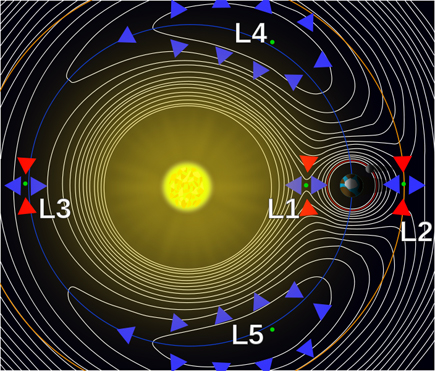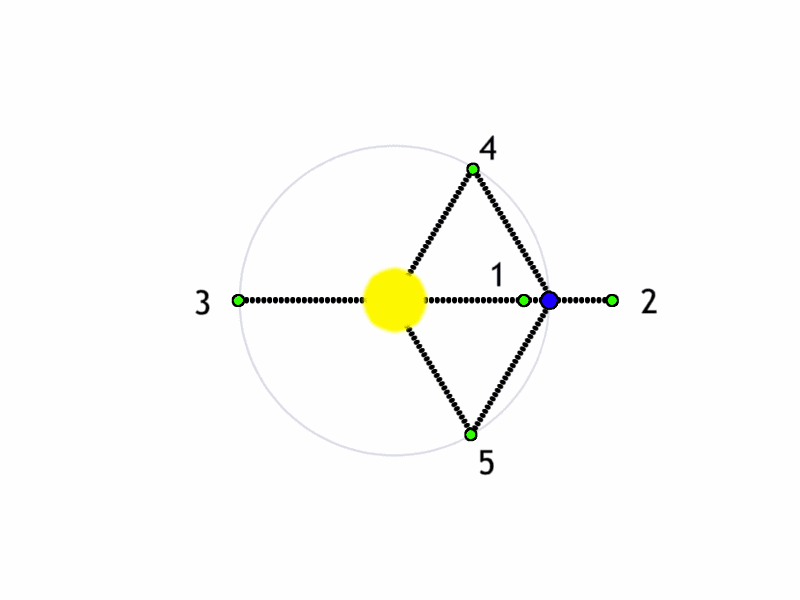

A contour plot of the effective potential of a two-body system (the Sun and Earth here) due to gravity and the centrifugal force as viewed from the rotating frame of reference in which Sun and Earth remain stationary. Objects revolving with the same orbital period as the Earth will begin to move according to the contour lines showing equipotential surfaces. The arrows indicate the gradients of the potential around the five Lagrange points - downhill toward (red) or away from (blue) them, but at the points themselves these forces are balanced.
The Lagrangian points (also Lagrange points, L-points, or libration points), are the five positions in an orbital configuration where a small object affected only by gravity can theoretically be stationary relative to two larger objects (such as a satellite with respect to the Earth and Moon). The Lagrange points mark positions where the combined gravitational pull of the two large masses provides precisely the centripetal force required to rotate with them. They are analogous to geostationary orbits in that they allow an object to be in a "fixed" position in space rather than an orbit in which its relative position changes continuously.
More technically and precisely, Lagrangian points are the stationary solutions of the circular restricted three-body problem. For example, given two massive bodies in circular orbits around their common center of mass, there are five positions in space where a third body, of comparatively negligible mass, could be placed which would then maintain its position relative to the two massive bodies. As seen in a rotating reference frame with the same period as the two co-orbiting bodies, the gravitational fields of two massive bodies combined with the centrifugal force are in balance at the Lagrangian points, allowing the third body to be stationary with respect to the first two bodies.
(Text and graphics from http://en.wikipedia.org/wiki/Lagrangian_point. See http://creativecommons.org/licenses/by-sa/3.0/ for copyright information.)

The five Lagrangian points (marked in green) at two objects orbiting each other. (Here a yellow sun and blue earth)